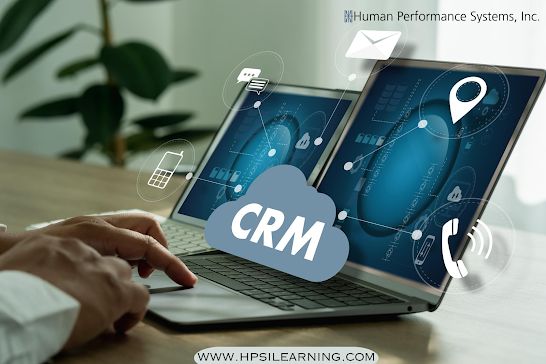
In the realm of business strategy, identifying and nurturing high-value customers is essential for sustainable growth and profitability. Customer Relationship Management (CRM) systems play a pivotal role in this endeavor by providing businesses with the tools and insights needed to identify, understand, and effectively target high-value customers. This article explores how CRM systems enable businesses to identify these valuable segments and tailor their marketing and service strategies accordingly.
Understanding High-Value Customers
High-value customers are those individuals or entities who contribute significantly to a business’s revenue and profitability. While the definition of high-value can vary based on industry and business model, common characteristics include:
- High Revenue Generation: Customers who make frequent or large purchases.
- Long-Term Loyalty: Customers who consistently choose the business over competitors.
- Referral Potential: Customers who refer others or advocate for the brand.
- Profitability: Customers who generate high margins or lifetime value.
Identifying and nurturing these customers is crucial because they not only drive current revenue but also have the potential to provide sustained business growth through repeat business and positive word-of-mouth.
How CRM Facilitates Identification of High-Value Customers
CRM systems are designed to collect, organize, and analyze customer data from various touchpoints. Here’s how CRM helps businesses identify high-value customers:
Data Centralization
CRM systems centralize customer data into comprehensive profiles, capturing information such as purchase history, transaction amounts, frequency of purchases, communication preferences, and interactions across different channels (e.g., website, social media, customer service). By consolidating this data into a single view, businesses gain a holistic understanding of each customer’s behavior and value.
Segmentation and Profiling
CRM systems enable businesses to segment customers based on various criteria, including transactional data, demographic information, psychographic profiles, and behavioral patterns. By creating segments such as “high spenders,” “frequent buyers,” or “loyal customers,” businesses can identify clusters of high-value customers within their customer base.
Behavioral Analysis
CRM systems analyze customer behavior to identify patterns and trends that indicate high-value characteristics. For example, they can track the frequency of purchases, average order value, engagement with marketing campaigns, and responsiveness to promotions. Behavioral analysis helps businesses understand what drives high-value customers to make purchasing decisions and how they prefer to interact with the brand.
Predictive Analytics
Advanced CRM systems leverage predictive analytics to forecast which customers are likely to become high-value based on historical data and trends. By identifying early indicators of high-value potential, businesses can proactively invest resources in nurturing these relationships and maximizing their lifetime value.
Targeting High-Value Customers with CRM
Once high-value customers are identified, CRM systems facilitate targeted marketing and service strategies:
Personalized Marketing Campaigns
CRM systems enable personalized marketing campaigns tailored to the preferences and behaviors of high-value customers. For example, businesses can send personalized offers, recommendations, and content based on past purchases or interests, increasing the relevance and effectiveness of marketing efforts.
Enhanced Customer Service
CRM systems equip customer service teams with insights into high-value customers’ preferences and histories, enabling personalized and proactive service. Service representatives can anticipate needs, resolve issues promptly, and provide tailored recommendations, enhancing the overall customer experience.
Loyalty Programs and Retention Strategies
CRM systems help businesses design and manage loyalty programs targeted at high-value customers. By offering exclusive rewards, incentives, and personalized experiences, businesses can strengthen relationships, increase retention rates, and encourage repeat purchases.
Cross-Selling and Upselling Opportunities
CRM systems identify cross-selling and upselling opportunities by analyzing customer purchase patterns and preferences. Businesses can suggest complementary products or upgrades to high-value customers, thereby increasing average order value and maximizing revenue per customer.
Benefits of Using CRM to Target High-Value Customers
The adoption of CRM systems for identifying and targeting high-value customers offers several strategic advantages:
- Maximized Revenue: Focus on customers who generate the highest returns, increasing overall profitability.
- Improved Customer Retention: Personalized interactions and proactive service enhance loyalty and reduce churn rates.
- Efficient Resource Allocation: Targeted marketing and service strategies optimize resource allocation and maximize ROI.
- Enhanced Customer Experience: Tailored experiences build stronger emotional connections and satisfaction levels.
- Data-Driven Decision Making: Analytics and insights enable informed decisions that align with business objectives.
Case Study: CRM in E-commerce
An e-commerce retailer utilizes CRM to identify high-value customers by analyzing purchase frequency, average order value, and engagement with marketing campaigns. Using CRM insights, the retailer implements personalized email campaigns and loyalty rewards tailored to each customer segment’s preferences, resulting in increased repeat purchases and customer satisfaction.
Conclusion
In today’s competitive landscape, leveraging CRM systems to identify and target high-value customers is crucial for business growth and profitability. By centralizing customer data, segmenting based on behavior and value, and implementing targeted strategies, businesses can effectively nurture valuable relationships and drive sustainable success. As customer expectations continue to evolve, the integration of CRM technology will remain essential for businesses aiming to achieve a competitive edge and foster long-term customer loyalty.